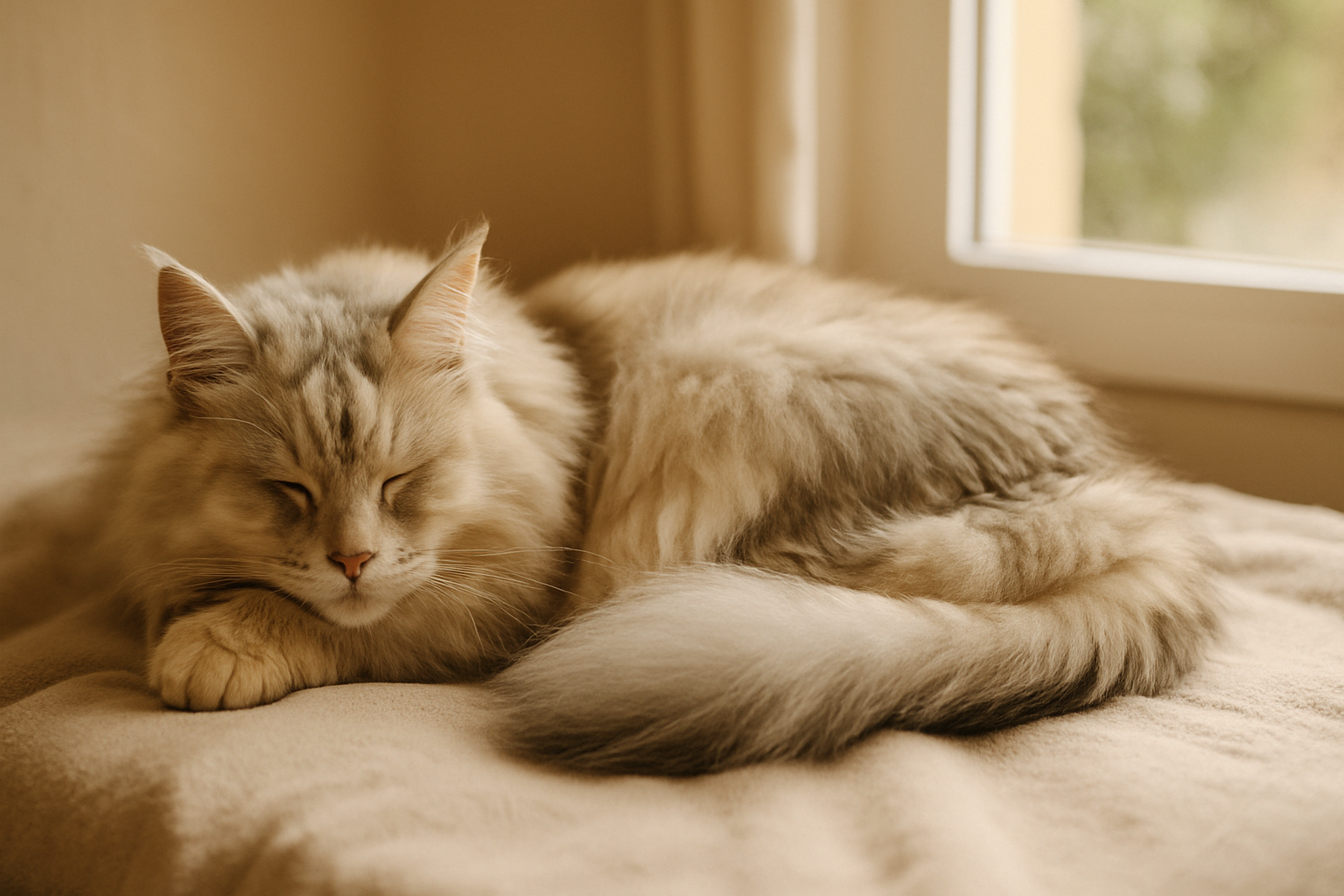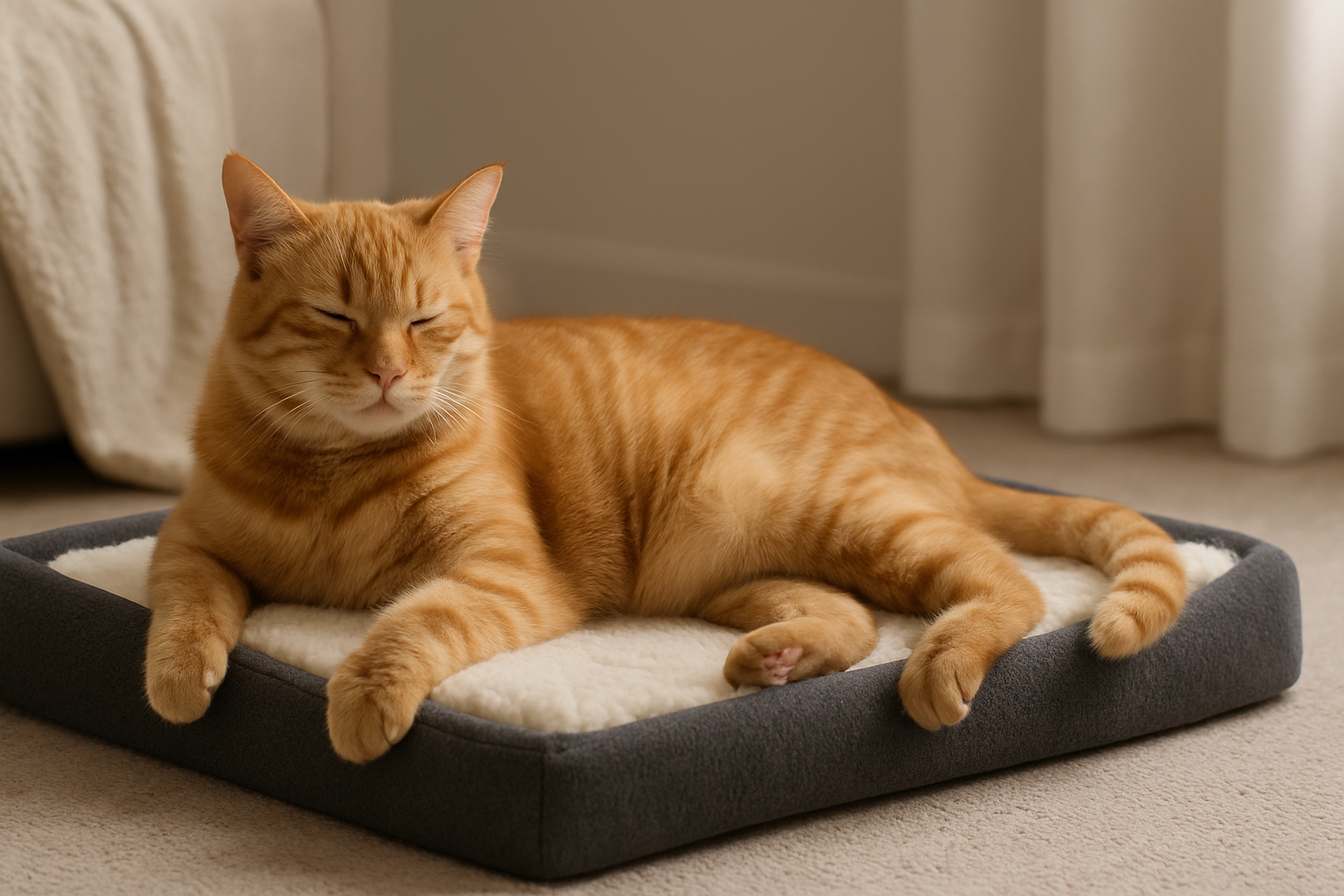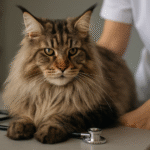I’ll never forget when my first cat, Misty, started moving a little differently.
She was the kind of cat who made everything look effortless—hopping onto bookshelves, perching on window ledges like a queen surveying her kingdom. But one day, she hesitated. She paused before jumping, sat down gingerly, and even started bunny-hopping up the stairs.
At first, I chalked it up to age. Or maybe a minor strain. But deep down, something felt off. A vet visit confirmed it: hip dysplasia in cats.
I had no idea cats could even get hip dysplasia. But trust me—it’s real, and it’s more common than most of us think. If you’re wondering whether your cat might have it, or you’ve already gotten the diagnosis and feel overwhelmed, you’re not alone.
Let’s walk through it together—what it is, what to look for, and how you can help your cat live their best life, even with this tricky condition.
What Is Hip Dysplasia in Cats?
Hip dysplasia in cats happens when the hip joint doesn’t form properly. Instead of the ball of the thigh bone (femur) fitting snugly into the socket of the hip, it’s loose, shallow, or misaligned.
Think of it like a doorknob sitting in a too-big hole. It still turns, but it clunks around awkwardly, causing friction. Over time, that joint wears down, leading to pain, inflammation, and arthritis.
While we usually hear about hip dysplasia in dogs, cats can be affected too. It is more common in large breeds like Maine Coons, Ragdolls, and Himalayans, though smaller cats may develop it as they age.
What Are the Symptoms of Hip Dysplasia in Cats?
Here’s the tricky part: symptoms of hip dysplasia in cats can be super subtle.
Cats are masters of hiding pain. Misty still purred, still ate like a queen, and never meowed in discomfort. But the clues were there if I knew what to look for:
- Hesitating before jumping
- Limping or “bunny-hopping”
- Walking with a stiff or swaying gait
- Avoiding stairs or high places
- Sleeping more than usual
- Licking or biting at their hip area
- Whimpering or growling when touched near the back legs
One of the biggest red flags? Misty stopped climbing up to her favorite window spot. If your cat suddenly changes long-standing habits, it’s worth paying attention.
Quick tip: Try gently running your hand along your cat’s lower back and hips. If they flinch, move away, or act irritated, it might be more than just cattitude.
Can a Cat Live Comfortably with Hip Dysplasia?
Absolutely. Misty lived a long, happy life. But we did have to make some changes.
Once you know your cat has hip dysplasia, your goal becomes comfort and mobility.

Here’s what helped Misty the most:
And the truth is, cats are resilient. They don’t mope around thinking, “Why me?” They adjust. They nap in new spots. They wiggle up the stairs instead of jumping. They just need a little help from you.
How Is Hip Dysplasia Diagnosed?
It usually takes an X-ray to confirm. Your vet will likely check your cat’s range of motion, watch how they walk, and ask about behavior changes.
Here’s what helped me during Misty’s vet visit:
- I filmed her walking around the house. (She walked normally at the clinic—of course.)
- I made a list of her recent changes: less jumping, more resting, occasional limping.
- I asked about both short-term relief and long-term options for managing feline hip dysplasia.
Even if your cat doesn’t need surgery (most don’t), a clear diagnosis can guide everything from pain relief to environmental tweaks.
Is Surgery Necessary for Hip Dysplasia in Cats?
Only in severe cases.
Most cats do just fine with non-surgical treatments—think medication, joint support, and lifestyle changes. But if the pain becomes too intense, or if the joint is so unstable it affects daily life, your vet might suggest:
- FHO (Femoral Head Ostectomy): They remove the ball of the hip joint. Sounds extreme, but cats adapt quickly and often regain pain-free movement.
- Total hip replacement: Rare in cats, but an option for serious cases.
Again, many cats—like Misty—never need surgery. But it’s good to know what’s out there.
How Can I Make Life Easier for My Cat?

Let’s be real: you don’t need to turn your home into a cat spa. But a few thoughtful touches go a long way:
- Ramps or steps to favorite spots
- Low-sided litter boxes that are easy to step into
- Elevated food dishes to avoid crouching
- Warm, cozy spots (heat is soothing for sore joints)
- Playtime that avoids jumping—think wand toys and puzzles
You know your cat best. Watch them. If something seems hard, find a way to make it easier.
What if I Just Found Out My Cat Has It?
First—take a deep breath. I know how overwhelming it feels when the vet starts throwing around medical terms like feline hip dysplasia and tossing out treatment options. It’s a lot.
Here’s what I wish someone had told me when Misty was diagnosed:
You’re doing better than you think.
Your cat doesn’t need perfect hips to live a happy, cozy, joy-filled life. What they do need is a little support, a safe home, and a human who’s paying attention—and clearly, that’s you.
FAQs About Hip Dysplasia in Cats
Can kittens have hip dysplasia?
Yes, though it’s less common. It’s usually inherited, and signs may not show until adulthood.
Is hip dysplasia painful for cats?
It can be. Many cats show discomfort through subtle behavior changes. If untreated, it often leads to arthritis, which can be painful.
Does diet help with hip dysplasia in cats?
Definitely. Keeping your cat at a healthy weight reduces stress on their hips. Omega-3 fatty acids may also reduce inflammation.
How long can a cat live with hip dysplasia?
Most cats live normal lifespans. With the right care, they can thrive well into their senior years.
Is it okay to play with a cat who has hip dysplasia?
Yes—but avoid high-impact activities. Keep play low to the ground and follow your cat’s lead.
Final Thoughts: You’ve Got This
Caring for a cat with hip dysplasia isn’t about fixing everything—it’s about noticing the little things and being there when they need you.
And honestly? That’s what cat parenting is all about.
Whether you’re just starting this journey or you’ve been managing symptoms for a while, know that your cat can still have a joyful, full life. Misty did. And so can yours.
Got questions? Leave a comment or reach out—I love hearing about other people’s experiences with their fabulous, flawed felines.







